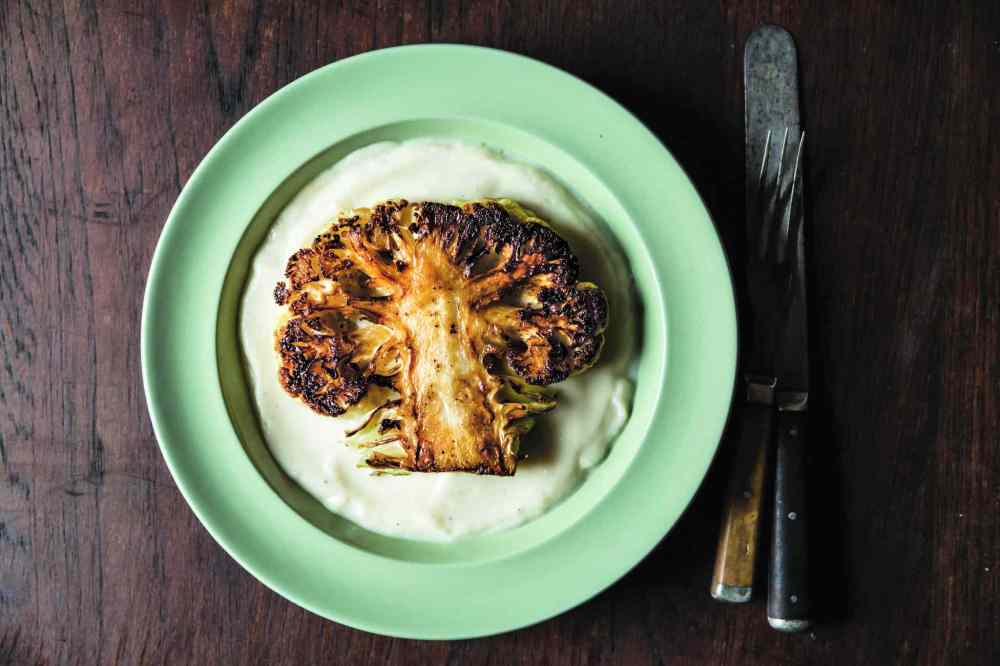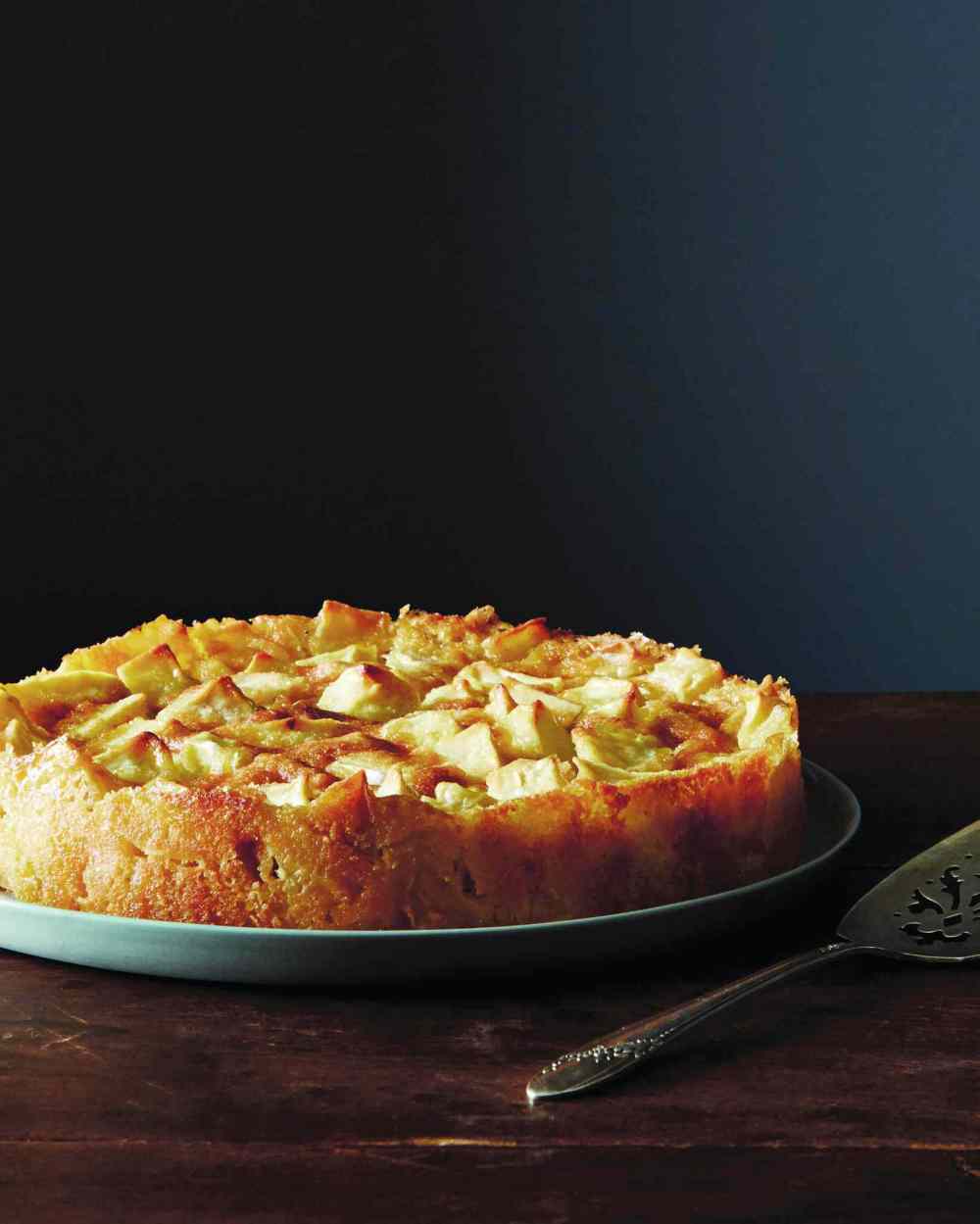Dishes collected in Genius Recipes will make you look like kitchen superstar
Advertisement
Read this article for free:
or
Already have an account? Log in here »
To continue reading, please subscribe:
Monthly Digital Subscription
$0 for the first 4 weeks*
- Enjoy unlimited reading on winnipegfreepress.com
- Read the E-Edition, our digital replica newspaper
- Access News Break, our award-winning app
- Play interactive puzzles
*No charge for 4 weeks then price increases to the regular rate of $19.00 plus GST every four weeks. Offer available to new and qualified returning subscribers only. Cancel any time.
Monthly Digital Subscription
$4.75/week*
- Enjoy unlimited reading on winnipegfreepress.com
- Read the E-Edition, our digital replica newspaper
- Access News Break, our award-winning app
- Play interactive puzzles
*Billed as $19 plus GST every four weeks. Cancel any time.
To continue reading, please subscribe:
Add Free Press access to your Brandon Sun subscription for only an additional
$1 for the first 4 weeks*
*Your next subscription payment will increase by $1.00 and you will be charged $16.99 plus GST for four weeks. After four weeks, your payment will increase to $23.99 plus GST every four weeks.
Read unlimited articles for free today:
or
Already have an account? Log in here »
Hey there, time traveller!
This article was published 06/05/2015 (3857 days ago), so information in it may no longer be current.
As the title promises, Genius Recipes (Ten Speed Press, 251 pages, $41) features standout food. But the concept of Kristen Miglore’s cookbook is genius, too.
Miglore is an executive editor at Food52.com, a website founded in 2009 by Amanda Hesser and Merrill Stubbs. In her weekly Genius Recipes series, Miglore features dishes from star chefs and cookbook authors. She collects tried-and-true and talked-about recipes — Marcella Hazan’s tomato sauce with onion and butter, Nigella Lawson’s deeply dense chocolate loaf cake. But she also adores the unorthodox and the unusual.
For this cookbook, Miglore has gathered 100 recipes that make us “rethink cooking tropes, solve problems, get us talking and make cooking more fun,” she writes.

Genius Recipes features several viral sensations. Miglore includes Jim Lahey’s no-knead bread recipe, which relies on a long, slow rise (up to 18 hours). In 2006, this recipe spread through the Internet with you’ve-got-to-try-this urgency.
She also highlights Marian Burros’s perennially popular purple plum torte, which was published — by insistent reader demand — every September in the New York Times from 1982 to 1989 and voted reader favourite in The Essential New York Times Cookbook.
Miglore also highlights recipes that possess a kind of counterintuitive craziness. Take the chocolate mousse from Hervé This, who coined the term “molecular gastronomy.” His two-ingredient recipe calls for just chocolate and water, breaking the pastry-chef law that you shouldn’t let even a drop of water near your melting chocolate, for fear of it seizing.
Also flying in the face of conventional wisdom, a recipe for perfect pan-fried steaks suggests flipping every 15 seconds — every 15 seconds! — while a recipe for “broccoli cooked forever” tosses out the usual preference for tender-crisp veg in favour of a slow-fried garlicky confit.
The cookbook’s 100 recipes are from all over the place, and retain the contributors’ personalities. Some recipes are highly detailed — never-soggy blueberry pie from the always precise Rose Levy Berenbaum, for instance. Others have a certain insouciance — British chef Fergus Henderson calls for “a little gesture of balsamic vinegar” in his beet and cabbage salad.
Miglore is a scrupulous tester, and her extended notes on each recipe offer handy tips and techniques. They may show off the genius of food stars like Yotam Ottolenghi and Julia Child, but as Miglore promises, “Once we’ve folded them into our repertoires, they make us feel pretty genius too.”
Dan Barber’s Cauliflower Steaks
One 680-g (11/2-lb) head cauliflower
360 ml (11/2 cups) water
240 ml (1 cup) whole milk
30 ml (2 tbsp) vegetable oil, plus more for brushing

Salt and freshly ground black pepper
Preheat oven to 175 C (350 F). Using a sharp, heavy knife and starting at the top centre of the cauliflower head, cut two 2.5-cm (1-inch) thick slices of cauliflower, cutting through the stem end. Set the cauliflower steaks aside.
Cut enough florets from the remaining cauliflower head to measure 300 g (3 cups). Combine the florets, water and milk in a medium saucepan and sprinkle with salt and pepper. Bring to a boil and cook until cauliflower florets are very tender, about 10 minutes. Strain, reserving 240 ml (1 cup) of the cooking liquid.
Transfer the florets to a blender. Add 120 ml (1/2 cup) of the reserved cooking liquid and purée until smooth. Add more of the liquid, if desired, and purée again. Return the purée to the same saucepan.
Heat the 30 ml (2 tbsp) vegetable oil in a heavy, large ovenproof skillet over medium-high heat. Brush the cauliflower steaks with additional oil and sprinkle with salt and pepper. Add the cauliflower steaks to the skillet and cook until golden brown, about 2 minutes per side. Transfer the skillet to the oven and bake the cauliflowers steaks until tender, about 10 minutes.
Rewarm the cauliflower purée over medium heat. Divide the purée between two plates; top each with cauliflower steak and serve. Serves 2.
Tester’s notes: The recipe relies on techniques that play to cauliflower’s two sides. The purée showcases the vegetable’s incredible creaminess, while the seared and roasted steaks offer charred and crisp texture and a slightly nutty flavour. Genius!

Marie-Hélène’s Apple Cake, from Dorie Greenspan
175 ml (3/4 cup or 95 g) all-purpose flour
3 ml (3/4 tsp) baking powder
Pinch of salt
4 large apples (if you can, choose four different kinds)
2 large eggs
175 ml (3/4 cup or 150 g) sugar
45 ml (3 tbsp) dark rum
2 ml (1/2 tsp) pure vanilla extract
115 g (1/2 cup) unsalted butter, melted and cooled
Centre a rack in the oven, and preheat oven to 175 C (350 F). Generously butter a 20-cm (8-inch) springform pan and put it on a baking sheet lined with a silicone mat or parchment paper.

Whisk the flour, baking powder and salt together in small bowl. Peel the apples, cut them in halves and remove the cores. Cut into 2.5- to 5-cm (1- to 2-inch) chunks. In a bowl, beat the eggs with a whisk until they’re foamy. Pour in the sugar and whisk for a minute or so to blend. Whisk in the rum and vanilla. Whisk in half the flour mixture and when it is incorporated, add half the melted butter, followed by the rest of the flour mixture and the remaining butter, mixing gently after each addition so that you have a smooth, rather thick batter. Switch to a rubber spatula and fold in the apples, turning the fruit so that it’s coated with batter. Scrape the mix into the pan and poke it around a little with the spatula so that it’s evenish.
Slide the pan into the oven and bake for 50 to 60 minutes, until the cake is golden brown and a knife inserted deep into the centre comes out clean; the cake may pull away from the sides of the pan. Transfer to a cooling rack and let rest for 5 minutes.
Carefully run a blunt knife around the edges of the cake and remove the sides of the springform pan. (Open the springform slowly, and before it’s fully opened, make sure there aren’t any apples stuck to it.) Allow the cake to cool until it is just slightly warm or at room temperature. If you want to remove the cake from the bottom of the springform pan, wait until the cake is almost cooled, then run a long spatula between the cake and the pan, cover the top of cake with parchment or waxed paper, and invert it onto a rack. Carefully remove the bottom of the pan and turn the cake over onto a serving dish.
Serves 8.
Tester’s notes: This is what the Brits call “a damp cake,” with crispy-chewy edges and a boozy, moist, almost custardy centre that contains more apple than cake. Greenspan advises using four different apple varieties because each type of apple behaves differently when baked, adding an unpredictability to the cake’s texture and flavour. I used a Granny Smith, a Golden Delicious, an Ambrosia and a Pink Lady.
You can serve this cake warm, but I liked it almost better the next day when — confession time — I ate some for breakfast. It will keep about two days at room temp and is so moist it’s best not to cover it — just press a piece of plastic wrap against cut surfaces.

Studying at the University of Winnipeg and later Toronto’s York University, Alison Gillmor planned to become an art historian. She ended up catching the journalism bug when she started as visual arts reviewer at the Winnipeg Free Press in 1992.
Our newsroom depends on a growing audience of readers to power our journalism. If you are not a paid reader, please consider becoming a subscriber.
Our newsroom depends on its audience of readers to power our journalism. Thank you for your support.
History
Updated on Wednesday, May 6, 2015 8:25 AM CDT: Changes headline, replaces photos

